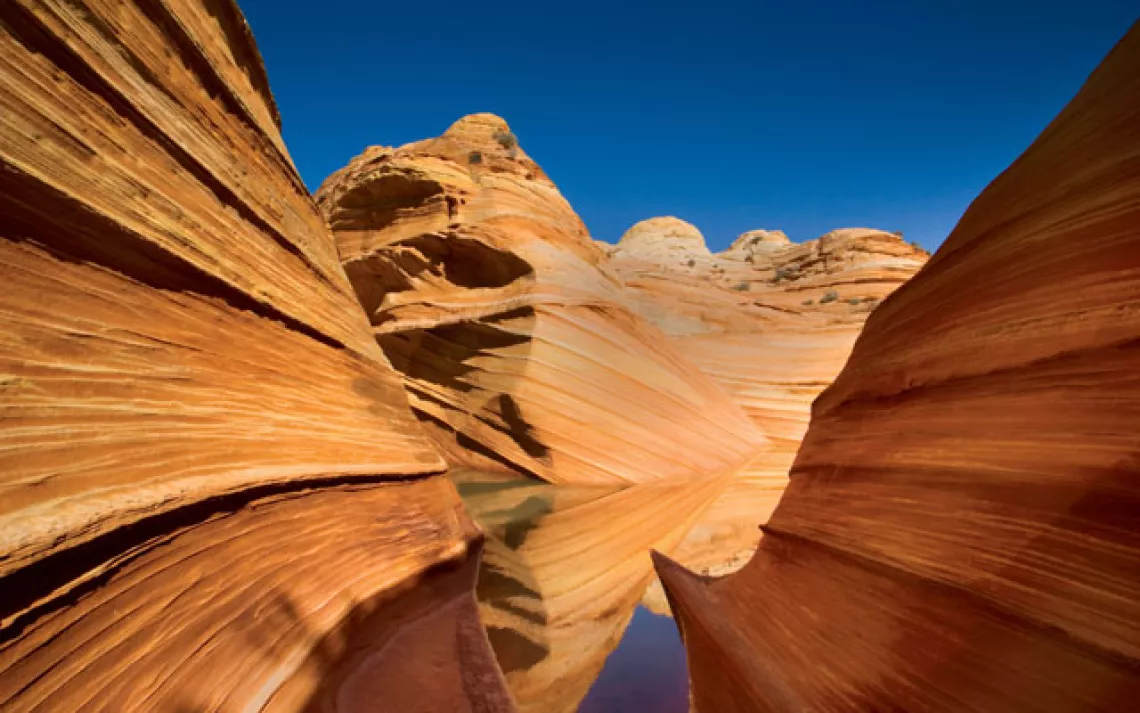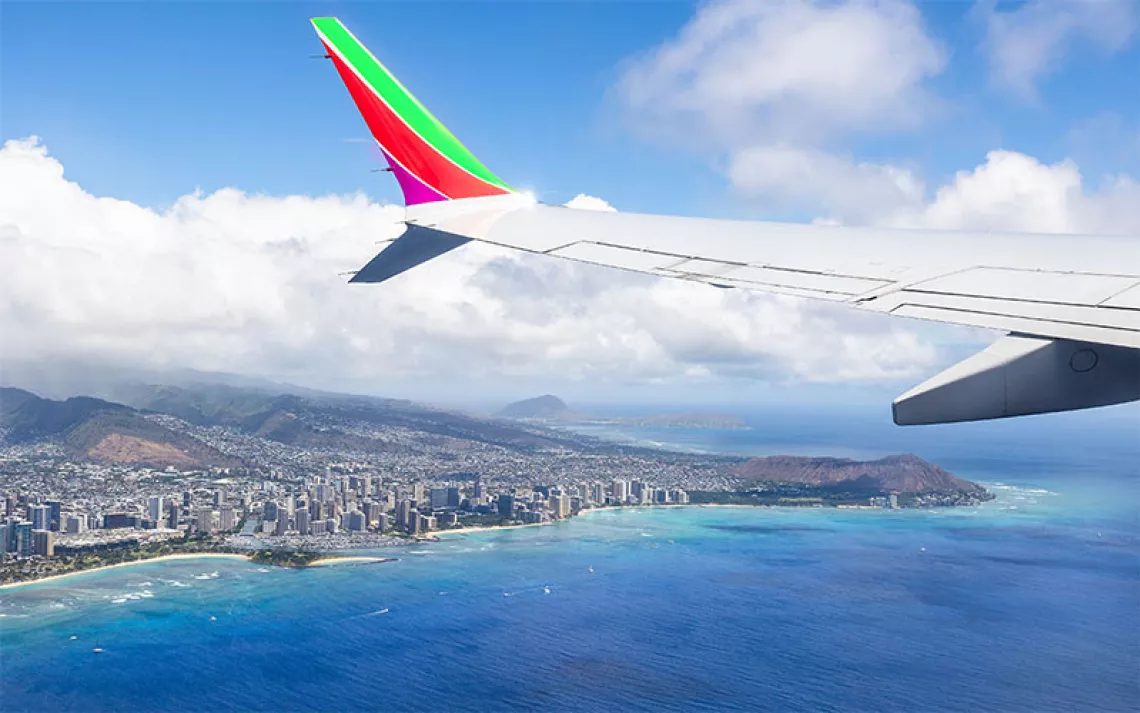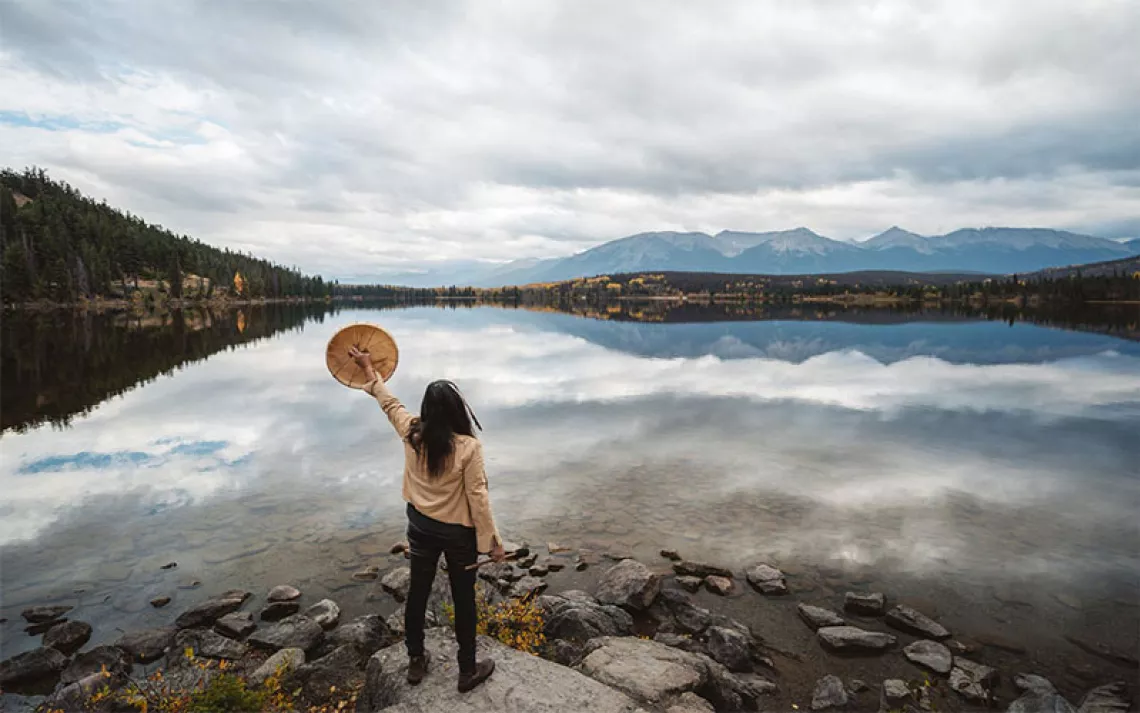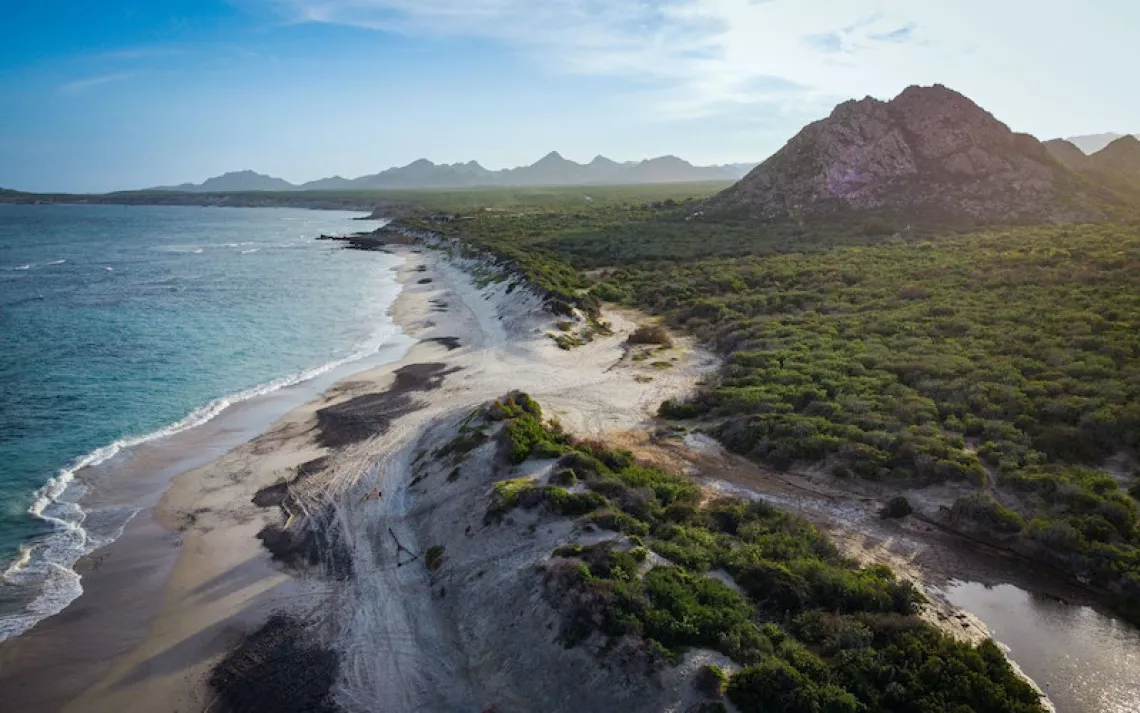Paria Canyon
Exploring one of the longest and deepest slot canyons in the world

The 190-million-year-old petrified sand dunes known as the Wave undulate in the Paria Canyon–Vermilion Cliffs Wilderness. | Gary Crabbe/Enlightened Images
Near the junction of the Paria Narrows and Buckskin Gulch, afternoon gilds the shallows. Navajo sandstone twists into tight goosenecks in the stream's attempt to break free. I pass Slide Rock, a silo-size chunk delaminated from the cliffs. The Paria River has whittled its base into a dainty pedestal, allowing hikers to dart beneath the slanted roof.\
"Landscape is a work of the mind. Its scenery is built up as much from strata of memory as from layers of rock." — Simon Schama, art historian

Sign up to receive Sierra News & Views
Get articles like this one sent directly to your inbox weekly.
With this action you affirm you want to receive Sierra Club communications and may vote on policy designated by the Sierra Club Board.
A little later, I drop my pack at a cavernous confluence to explore the lower end of Buckskin Gulch. Upstream from Wire Pass, near Coyote Buttes and the swirling, petrified dunes known as the Wave, this renowned tributary has carved one of the longest and deepest slot canyons in the world. The confining walls—in some places less than three feet wide—funnel me to a jumble of boulders, which I negotiate by crawling through a small passageway. In a fit of the bends (I just want to peek around the next bend . . . and the bend after that), I keep walking, as if under a spell.
Suddenly, in front of my boots, a feline face stares at me from the ground, eerily disembodied, a death mask. Closer inspection reveals empty eye sockets and an intact muzzle with delicate whiskers. Patches of fur cling to the skull. It's a bobcat, perhaps killed by a flash flood or dismembered by God knows what.
Time dissolves as I move farther upcanyon. Too soon, shadows lengthen inside the gulch, forcing me to return to my pack and look for a tent site beyond the confluence. Sloshing shin-deep in the cold river, I think again of the bobcat and wonder how it died—one of the desert's countless stories that will forever go untold.
 The Magazine of The Sierra Club
The Magazine of The Sierra Club



